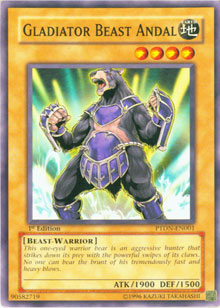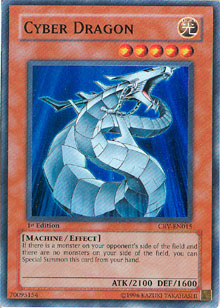Whenever a World Championship rolls around, there’s bound to be some controversy. Maybe someone didn’t make it to the tournament and everyone wants to know why. Maybe somebody did especially well (or not well), or perhaps there was a new ruling made that we’d never seen before. The questions and debates that arise from Worlds are usually pretty varied, but there’s always one particular type of rabble rouser who always rears his head, year after year on a reliable basis.
That guy that tries to convince you "Worlds doesn’t matter."
Seriously, there are people who think the World Championship of the game—the culmination of a year’s worth of qualifying events and countless hours of playtesting—somehow doesn’t matter. The logic behind the statement? It usually rests on two main points: "well, that tournament’s very small" and, "they don’t even use the same format."
For those not quite in the loop, Worlds is indeed a small event when it comes to the number of competitors. It usually features 23 duelists from thirteen to fifteen countries going head to head, and because everyone has to do something on the level of winning a National Championship to get there, the guest list is pretty short. But we’re talking about a gathering of some of the most incredible players in the world. There’s no "chaff" in the mix, and I don’t see why a tournament of nothing but tried and tested champions should be written off simply because only the best are invited.
The second gripe is a more interesting one. The World Championships use special Forbidden and Limited lists adapted from the current Advanced format, but with certain cards Forbidden if they weren’t globally released. The promos Japan has that we haven’t gotten yet? It wouldn’t be fair if European or American players had to compete against them, and the same is true in reverse: TCG exclusives like Allure of Darkness and Test Tiger don’t exist in the Japanese card pool, so they aren’t legal at Worlds. There are a few other cards that aren’t played at Worlds as well. For instance, since Shonen Jump magazine isn’t distributed in some countries, promos like Elemental Hero Stratos aren’t legal unless they’ve been reprinted in a regular set that all players could get their hands on.
It’s just common sense, and the result is a format where everybody’s on equal footing. Some people think that this difference in format makes the results from Worlds meaningless to competitive players. Frankly, I think those people are dead wrong. Seeing what the world’s greatest duelists do when they’re faced with new challenges in an environment that’s really quite close to the normal Advanced format draws out impressive results and some keen innovation. By studying the tournament you can often find some great ideas.
This is especially true in the case of individual tech cards. Most years a wide array of commonly played decks are just as viable at Worlds as they are in normal tournaments, though they might be missing one or two cards. That leaves small gaps in existing decklists, and the cards Worlds contenders fill those holes with are often surprising, promising, and very smart. So I want to use this article and the next to take a quick look at the top tech cards we saw at the World Championships. We’ll start with the one that won the tournament.
Gladiator Beast Andal
In a format where there was no Test Tiger to support Gladiator Beast Secutor, it was easy to see that everyone’s favorite amphibious Gladiator had no place in a competitive deck. Actually keeping Secutor on the field for a turn after tagging it in, then getting off an attack with it was far too difficult for a  relatively quick format. Kazuki Mutsuoka answered this problem by dropping Secutor for Gladiator Beast Andal—he was the only duelist who opted to do so. He eschewed a complicated effect monster for a normal monster instead, and he emerged from two days of heated competition as the newest World Champion. Clearly he was doing something right.
relatively quick format. Kazuki Mutsuoka answered this problem by dropping Secutor for Gladiator Beast Andal—he was the only duelist who opted to do so. He eschewed a complicated effect monster for a normal monster instead, and he emerged from two days of heated competition as the newest World Champion. Clearly he was doing something right.
Onlookers were left to ask "how did it happen?" How did a vanilla 1900 ATK beatstick lead to victory on the grandest stage of all? The answer was simple: attacking is very important right now, and if your opponent’s only monster is in attack position and you can’t run it over, your entire battle phase gets shut down. More than half the field at the World Championships consisted of Lightsworn and Gladiator Beasts, two battle-centric decks that can’t normal summon a monster capable of attacking over Gladiator Beast Andal.
If you read the feature matches from recent Shonen Jump Championships, or have played Gladiator Beasts yourself, you know that summoning Gladiator Beast Laquari or Elemental Hero Stratos on turn 1 is a common play. It leaves your opponent with very few ways to actually get off an attack next turn, forcing him or her to either make passive decisions or to commit a piece of removal in the early game. Both decisions bring unique difficulties, and we’re just talking about monsters with 1800 ATK! Andal’s 1900 ATK is simply impossible for any competitive deck to trump with normal summons, so Mutsuoka had a big edge in two situations: both when he opened a duel, and when he himself was faced with an 1800 ATK monster. Since he packed three copies of Gladiator Proving Ground it was no sweat for Mutsuoka to dig for Andal when he needed it.
Matt Peddle will elaborate on how good Andal really was this Sunday, but for now, consider how it functions in some of the current format’s top matchups. The truth is, Gladiator Beast Andal swings over most monsters just as well as a 2100 ATK Laquari, meaning that the main difference between those two monsters is that Laquari can tag out, while Andal can create major disruption for your opponent—especially in the early game. Andal is definitely worth exploring in the current Advanced format, even if Mutsuoka’s initial motivation (the lack of Test Tiger) isn’t actually relevant.
Cyber Dragon
Speaking of 2100 ATK monsters, a whopping ten of the twenty-two competitors at Worlds ran Cyber Dragon. With speed-oriented cards like Test Tiger, Allure of Darkness, and Elemental Hero Stratos  removed from the card pool, all the duelists were looking to outpace their opponents. Cyber Dragon let them do that, compensating for lost die rolls and pressing through Solemn Judgment.
removed from the card pool, all the duelists were looking to outpace their opponents. Cyber Dragon let them do that, compensating for lost die rolls and pressing through Solemn Judgment.
Cyber Dragon was another answer to the "summon a big beatstick" opening I mentioned earlier, powering over Laquari, Stratos, and even bigger cards like Garoth, Lightsworn Warrior and Elemental Hero Neos Alius. But size aside, the remarkable thing about Cyber Dragon is the fact that it lets a player in an advantageous situation leverage his or her cards into immediate field presence and damage. If you’re behind in a game, Cyber Dragon will often stabilize things to let you regain your footing. But if you’re winning (especially if you have more cards than your opponent), Cyber Dragon lets you put a huge amount of pressure on the opposition. In a format where just one draw can turn a dire situation into domination with Test Tiger, Dark Armed Dragon, or Judgment Dragon, the ability to end games a turn or two faster is massive.
Looking forward, Cyber Dragon just gets even better. Paired with level 3 Tuner monsters like Dark Resonator, it’s the perfect Synchro material for Stardust Dragon or Red Dragon Archfiend, getting you to the game’s biggest Synchro monsters in a single turn. Partner it with a level 1 Tuner like Sinister Sprocket instead, and you get the same level of access to Goyo Guardian.
Cyber Dragon is far better right now than most duelists realize, and it’s only going to gain more power over the coming weeks. It’s a tempo-stealing, game-ending, Synchro summoning powerhouse, and it fits into almost any deck to boot. No matter what you play, give some thought to what Cyber Dragon could do for your strategy.
That’s it for this week, but join me next Monday as I look at four more innovations from the World Championships. We’re just getting started and there’s a lot more ground to cover—with a new format on the horizon, now is the perfect time to learn from the best!
—Jason Grabher-Meyer